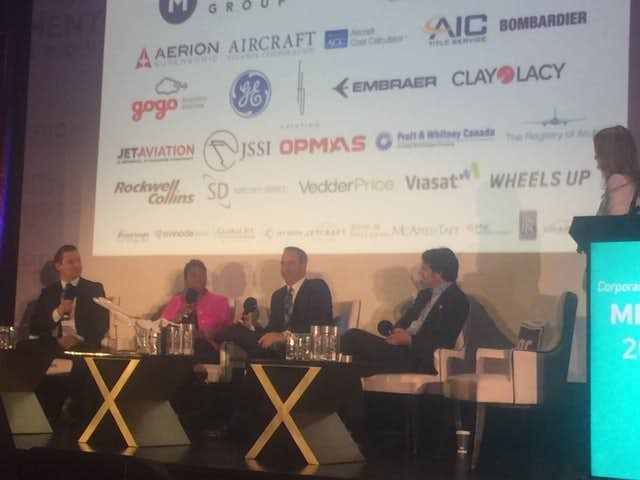

While a shortage of pilots in business aviation has been pushing up crew salaries by as much as 20%, buyers of jet cards and on-demand charter can look forward to continued favorable pricing, according to executives attending Corporate Jet Investor’s annual Dealmakers Conference being held this week at the Fontainebleau Miami Beach.
The fact flying privately should remain a buyer’s market as costs rise might be a bit of a surprise. “Charter rates need to go up. The industry is in a race to zero margins,” said Fabian Bello, CEO of Journey Aviation, a management company that operates large and midsize cabin jets, including about 10 Gulfstream IV series jets. “We’ve given over half a million dollars in crew raises and our charter rates haven’t gone up,” he said, adding, “People can wrap their head around fuel going up, but so far, not crew costs.”
Andrew Collins, who heads Sentient Jet, Skyjet and PrivateFly for Directional Aviation, doesn’t see a change. “What keeps prices depressed is this is a subsidized industry. Owners (of private jets) trying to subsidize expenses are willing to do trips at lower costs,” he said. “We only work with the top 25% of the (Part 135 charter) operators and we can always get rates that work.”
One challenge in the on-demand charter market continues to be the ability to offer instant, guaranteed pricing. “Pricing is your number one tiger to tame in on-demand charter,” Collins said, noting, “You need a (booking) platform that can take some (price) risk. If you’re going to launch instant booking with guaranteed pricing, technology is only going to take you so far.”
James Henderson, president of XOJET, which recently agreed to be acquired by VistaJet’s parent, told the audience, “Unless you have a floating fleet, fully charter ready (XOJET and VistaJet both do), to do all the permutations that impact pricing is so difficult. You can develop algorithms, but so many things change at the last minute (that impact the operator’s cost). We have the scale of fleet to do it, but smaller operators don’t.”
Don Haloburdo of Jet Aviation and Joe Barber, of Clay Lacy Aviation, both vice presidents, said an influx of first-time owners have lengthened the curve in terms of the long journey from tapping buttons on your keyboard to actually getting an aircraft in the charter market. It takes new owners six months or a year to understand the economics of owning an aircraft and how to manage charter as part of the ownership equation, Barber said. Multiple executives noted numerous big-dollar charters are often lost because of delays in getting owner approval.
“Speed to quote – having rapid owner approval is important. While technology can bridge the gap, sometimes it’s still done with smoke signals. It costs a lot of good trips,” said Collins. Henderson said that while XOJET uses over 100 operators for its $125 million off-fleet brokerage business, it focuses on 20 that have “charter ready, charter friendly” fleets.
Bello said of new owners, “(They) come without the knowledge of what it takes to own an aircraft (and) we end up bursting their bubble. Existing customers understand we are there to help reduce costs not make it a profit center.”
Speaking about the buzz around digital and app-based charter, Bello noted, “The client thinks its Uber. But after they get off the computer, technology stops. There are so many details that cannot be done on a click of the button. We get a 27-page manual on what the client wants. We have a conference call with four assistants. From retail to wholesale there are so many communications. You can fib it (and claim to be Uber), but there are hundreds of minions running around (to make the flight come off). Collins said about 30% of bookings for Skyjet and PrivateFly start with their consumer digital interfaces.
JetSuite president Stephanie Chung said the company “is spending a lot of dollars to focus on the human connection. We are dealing with high net worth individuals. Our clients want that high touch. They want to feel that we care. For us, technology is more internal. (The question we ask is) how do we elevate client experience through human connection.”
In addition to bumping up pilot salaries to retain top talent, she said the company has begun sending account managers to visit customers to better understand their holistic needs. “We want to be one of their trusted advisors,” she said.
One thing all the jet card and charter executives agreed up is there is a pilot shortage in business aviation with Chung and Henderson each noting they have lost a significant amount of on-demand trips due to not having a qualified crew for the flights. From my point of view, it also highlights in terms of shopping for jet cards or on-demand charter, buyers should more than ever research pilot qualifications, which includes not only overall hours but time in type for both captain and first officer, and depending on your specific flight needs, experience and training flying to mountain airports and international destinations, including islands.